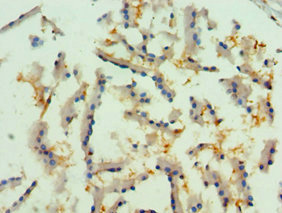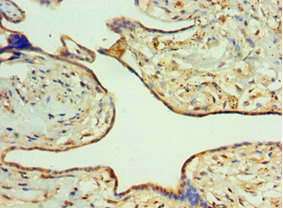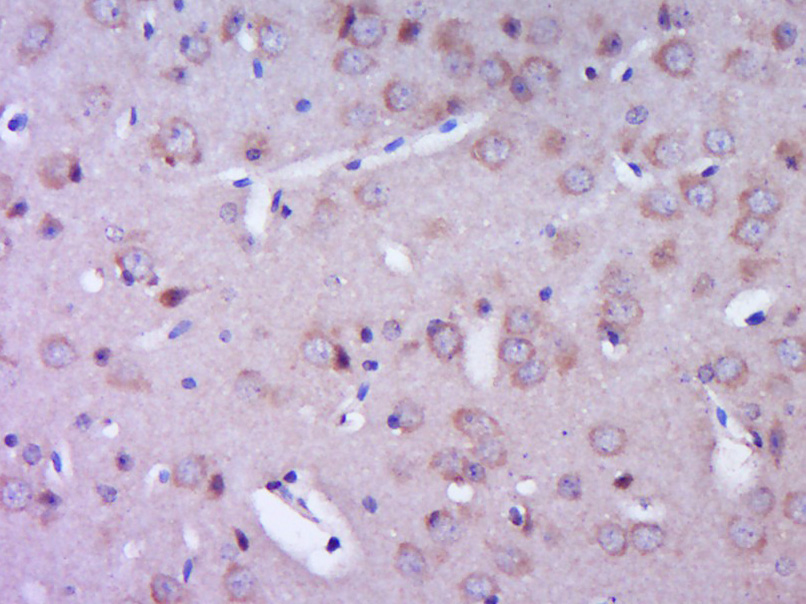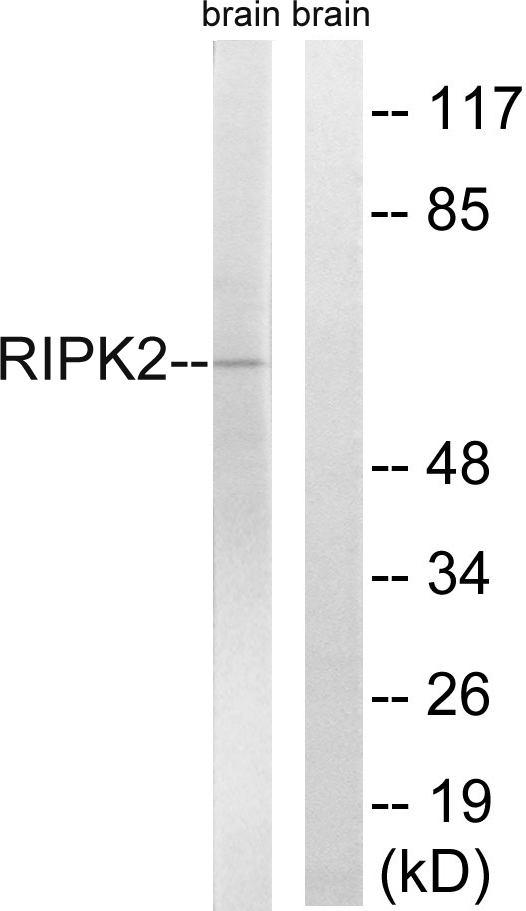
Immunohistochemistry of paraffin-embedded human prostate tissue using CSB-PA019736ESR1HU at dilution of 1:100
RIPK2 Antibody
CSB-PA019736ESR1HU
ApplicationsELISA, ImmunoHistoChemistry
Product group Antibodies
ReactivityHuman
TargetRIPK2
Overview
- SupplierCusabio
- Product NameRIPK2 Antibody
- Delivery Days Customer20
- ApplicationsELISA, ImmunoHistoChemistry
- CertificationResearch Use Only
- ClonalityPolyclonal
- ConjugateUnconjugated
- Gene ID8767
- Target nameRIPK2
- Target descriptionreceptor interacting serine/threonine kinase 2
- Target synonymsCARD3, CARDIAK, CCK, GIG30, RICK, RIP2, receptor-interacting serine/threonine-protein kinase 2, CARD-carrying kinase, CARD-containing IL-1 beta ICE-kinase, CARD-containing interleukin-1 beta-converting enzyme (ICE)-associated kinase, RIP-2, growth-inhibiting gene 30, receptor-interacting protein (RIP)-like interacting caspase-like apoptosis regulatory protein (CLARP) kinase, receptor-interacting protein 2, tyrosine-protein kinase RIPK2
- HostRabbit
- IsotypeIgG
- Protein IDO43353
- Protein NameReceptor-interacting serine/threonine-protein kinase 2
- Scientific DescriptionSerine/threonine/tyrosine kinase that plays an essential role in modulation of innate and adaptive immune responses. Upon stimulation by bacterial peptidoglycans, NOD1 and NOD2 are activated, oligomerize and recruit RIPK2 through CARD-CARD domains. Contributes to the tyrosine phosphorylation of the guanine exchange factor ARHGEF2 through Src tyrosine kinase leading to NF-kappaB activation by NOD2. Once recruited, RIPK2 autophosphorylates and undergoes Lys-63-linked polyubiquitination by E3 ubiquitin ligases XIAP, BIRC2 and BIRC3. The polyubiquitinated protein mediates the recruitment of MAP3K7/TAK1 to IKBKG/NEMO and induces Lys-63-linked polyubiquitination of IKBKG/NEMO and subsequent activation of IKBKB/IKKB. In turn, NF-kappa-B is released from NF-kappa-B inhibitors and translocates into the nucleus where it activates the transcription of hundreds of genes involved in immune response, growth control, or protection against apoptosis. Plays also a role during engagement of the T-cell receptor (TCR) in promoting BCL10 phosphorylation and subsequent NF-kappa-B activation.
- ReactivityHuman
- Storage Instruction-20°C or -80°C
- UNSPSC41116161






